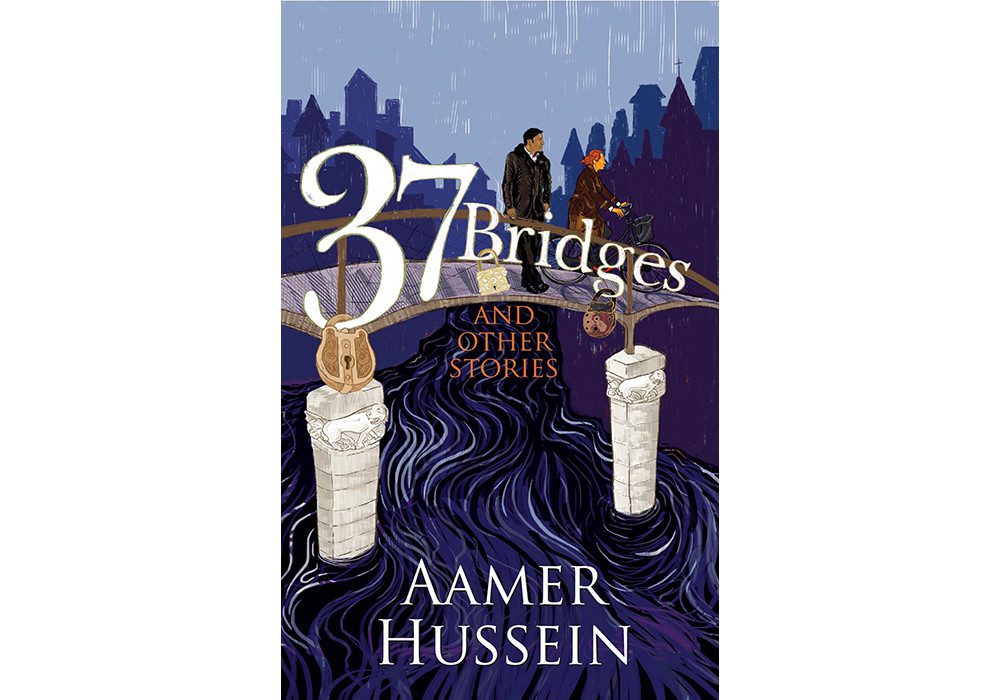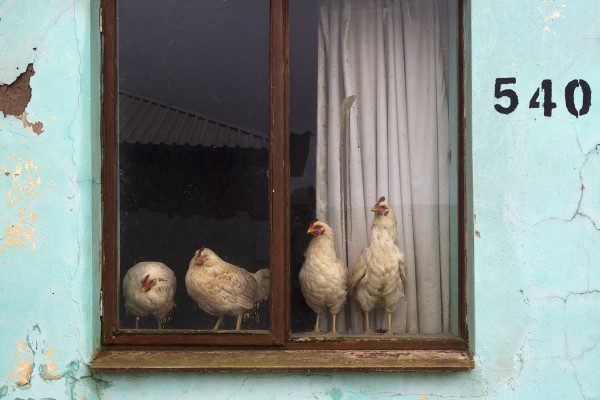Too many writers of writers of fiction pose as philosophers, as if they have the answers to the world’s secrets, Aamer Hussein tells Muddasir Ramzan.
Aamer Hussein is a writer, critic and a Professorial Writing Fellow at the University of Southampton. 37 Bridges and Other Stories, his eighth book, is a masterful new collection of 13 stories. Written beautifully to capture exile, settlement, modernity, friendship, love and art, the book is characterised by its varied narrative and stylistic experiments. He talks about the art and craft of telling tales.
Tell us about 37 Bridges. How did you get the idea for it, and how long did it take you to finish this book?
I started work on the first of these stories, ‘Two Old Men’, in the summer of 2010, and the last two, the title story and ‘The Man Who Stood Still’, were written last summer. What’s different about this collection is that I wrote five of the stories in Urdu and had them translated into English by other hands. When I try to translate myself from one language into another I find that I’m rewriting the story, so I gave up on that effort after one story, ‘The Swan’s Wife’.
I had never written in Urdu before 2012. It was something I always wanted to do, but didn’t have the courage to start. Once I did, it came easily. Speaking of collections, I don’t really think in terms of a new book until a sequence of stories begins to emerge: so there are two versions of this one, the first (The Swan’s Wife) came out in Pakistan last year, and this one—the Indian edition—has more stories, so it is effectively a new book.
‘37 Bridges’ is also a story in this collection. How did you select this as the title for whole book?
I’d just come back from Paris when I wrote the title story in Urdu. The city has 37 pedestrian bridges, I am told. The key scene of the title story is set on one of them, the Pont des Arts, so the title seemed to fit the collection: the story reflects many of its thematic concerns with loss, longing, wanderlust, art, friendship.
A few stories, for example, ‘Singapore Jay’ and the two ‘Knotted Tongues’, seem autobiographical. How much of this book is drawn from your personal experience?
The two ‘Knotted Tongues’ stories are inspired by real women I knew, yes. But the narrator only plays a nominal part in the stories. And yes, I was at school in the Nilgiris, like the narrator of ‘Singapore Jay’. Actually, ‘The Swan’s Wife’ is the most personal of these stories, though I’ll leave it to the reader to work out the degree of autobiography. The rest are fictional to a greater or lesser degree: I believe many writers use elements of their lives in their stories, but by the time they reach the page they’re transformed.
Tell us about your portrayal of women characters? What’s your view about feminism?
Many of my narrators are male, and the women in my stories are presented from their point of view. I don’t really decide, though, whether I’m going to focus on a male or a female protagonist in a story until I’m actually writing it. My female characters probably reflect the characteristics of women I’ve known in real life: talent, intelligence, charisma, bravery. The recognition of women’s writings, and feminist theory, transformed my generation; it was an essential part of our education. So let me say with a smile that some of my best friends are feminists.
In ‘Two Old Friends on a Stormy Afternoon’, Dr Kazi and Colonel Jami talk about lost values and matters related to diaspora. The two ‘Knotted Tongues’ stories also talk about similar things. Do you define yourself as a diasporic writer?
I’m a Pakistani writer who lives in Britain. I have spent much of my life in London and started my career here. But I visit, and work in, Pakistan more and more, write in Urdu, and often publish my work in Pakistan. My characters are mostly expats and economic migrants who leave their countries as adults, like the women in the title story and the ‘Knotted Tongues’ pieces, and usually from the Muslim world; exiles and refugees occasionally appear in my fiction, but as peripheral characters.
I’ve often set stories in Pakistan and India, and Jami and Kazi are firmly rooted in native soil: they long for the lost values of an older Pakistani generation, find religious extremism at home frightening and abhorrent, and regard the racism and Islamophobia of the West with horror. I don’t, however, write about settled communities or second-generation migrants, so really can’t see how I can be regarded as diasporic.
‘The Man Who Stood Still’, ‘Love and the Seasons’, ‘Nine Postcards and Nine Notes’, ‘The Swan’s Wife’, both ‘Knotted Tongue’ stories and ‘37 Bridges’ are all love stories. What is your idea of true love and a successful relationship?
I was discussing a French novel written in the 1930s with my students last week, about a woman who commits suicide out of love for her unfaithful husband. That story would be impossible to write today; it’s even hard to read about such obsessive love. Romantic love usually dies or fades into some sort of companionship once the first fires cool down. My novella Another Gulmohar Tree deals with a long relationship and how it turns from romance to indifference before the husband and wife learn to live with each other’s faults. In my novel The Cloud Messenger, the narrator falls in love passionately with two women but each of his relationships proves to be destructive. As I say in one of my stories in this collection, “if every spark became a fire, we’d be burning all the time.”
The experience of love is essential to any artist, but often, as in some of the stories you mention, I write about platonic or unfulfilled love, which must reflect some unconscious aspect of myself. And if you read my newer stories carefully, I think I write more often about friendship than sexual passion. In ‘37 Bridges’, the ‘Knotted Tongue’ stories and ‘Two Old Men’, romantic love, when it’s there at all, isn’t foregrounded, and in ‘Love and the Seasons’, Umair’s friendships take centre stage, not his fleeting romances.
Is writing an inspiration? Do you carry out any research for developing characters like L and M, Umair, Marya, Maia, Mrs Meer, Nermin?
I’m inspired by real life, folk tales and other fictions in varying measures. I look at paintings a lot, listen to music, read works of history in order to get the feel of a particular period. As a short story writer, character isn’t my primary concern. But sometimes the characters in my stories are composite versions of real people, like Nermin, Maia, Mrs Meer, or Safia in ‘The Entrepreneurs’. On the other hand, Marya, Kazi and Jami are entirely imaginary. Umair loves singing, as I did at his age, and has more than a passing resemblance to me in my 20s, but he really goes off in his own direction, which isn’t mine.
There are some experimental stories in the book—‘The Man Who Stood Still’, ‘Nine Postcards and Nine Notes’, ‘Knotted Tongue’. Do you like experimenting with new styles? What do you think makes a good story?
The book also includes a story that emulates episodes of a television serial, an unfinished fairy tale, and another composed of entries from an art catalogue. From the stories you mention, one is illustrated with photographs and written with a collaborator, and the other has multiple narrators, so yes, they are experiments.
But the ‘Knotted Tongue’ stories are quite simple. I don’t know if I would call them experiments, though they are the first stories I wrote in Urdu, which might give the language a translated or even an alien or exotic feel. I think the writer should enjoy the story (s)he has written and transfer the enjoyment to the reader.
What does your family think of your writing? Your mother translated ‘The Entrepreneurs’ from Urdu. Do you discuss your writing with her?
I think it’s been years since my three sisters or their children read my work in any systematic way, though they continue to encourage me! My mother’s always taken an interest in my writing, even if she doesn’t always like it. She translated two stories in the book, including the title story, because she particularly liked them. She did ask me if she could make changes to ‘The Entrepreneurs’, though; she put it into the third person.
How would you define a storyteller? In ‘The Man Who Stood Still’, a character says, “Who knows why people think storytellers are wise? We only look around us, record and reflect what we see. Or we wound ourselves to write in blood. We rarely understand a thing.” Could you elaborate on that?
That’s an ironic quote! But seriously, too many writers of fiction pose as philosophers, as if they have the answers to the world’s secrets. I don’t. I look around me, reflect on what I see, and ask questions. I think fiction’s place is to voice doubts, anxieties, the despair of not knowing, not to make great statements or provide documentary truths.
In this collection of thirteen different stories, which one is your favourite? And why?
I enjoyed writing ‘The Man Who Stood Still’, because it came to me like a dream, and L and M are the legendary lovers Laila and Majnu, lost in our urban realities. But ‘The Tree at the Limit’, though short, was the hardest to write, and is the one many readers like best. I’m close to it now, because it’s about an artist and her paintings, because I love visual art but don’t paint.
Do you have any suggestions to help me become a writer? If so, what are they?
Read a lot: not just fiction and poetry, but history, sociology, economics, philosophy. Listen to other people’s stories. Look at the world around you. Remember, you’re not the only subject of your own fiction. And remember that editing yourself is the most important part of your work.














